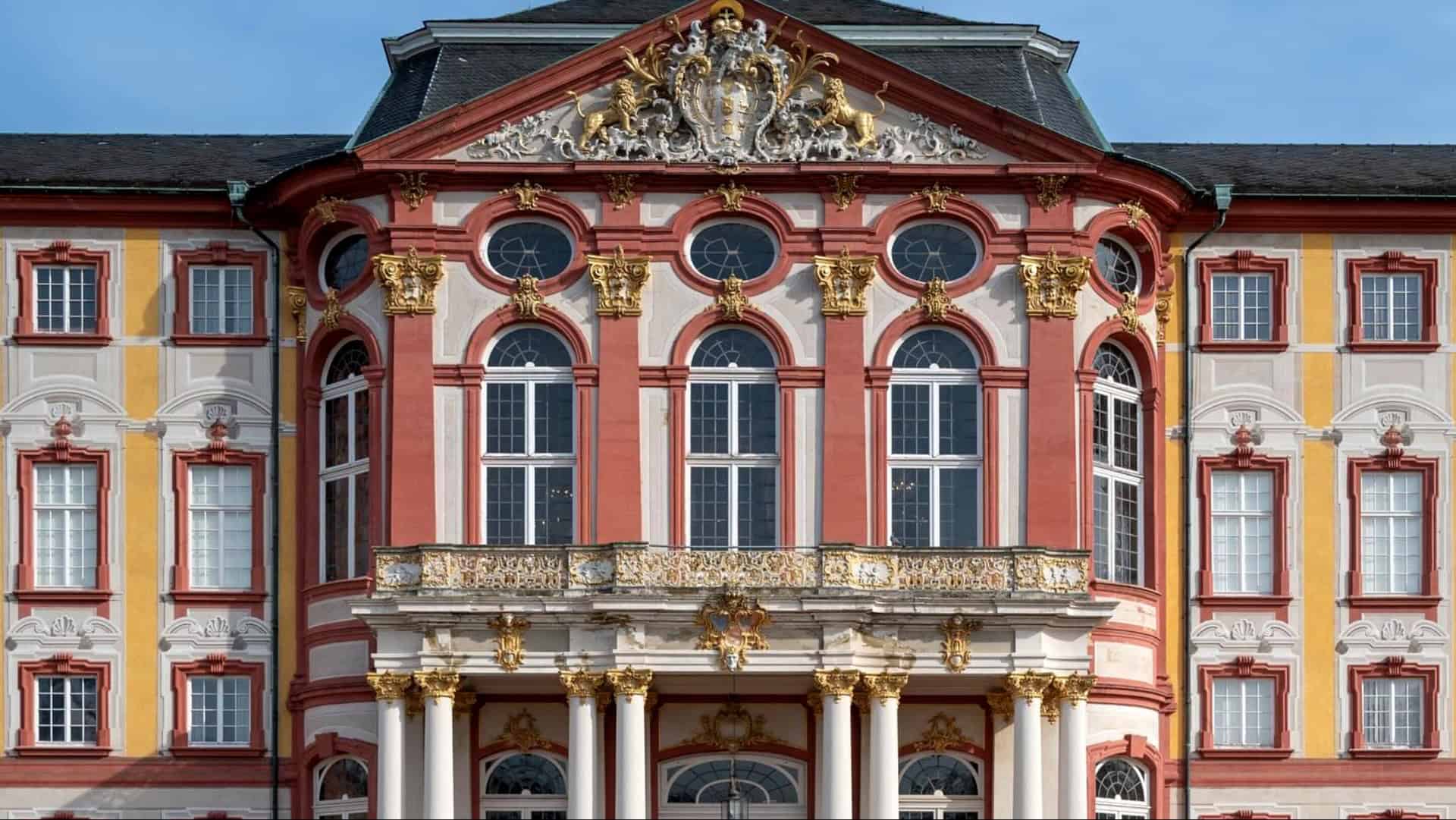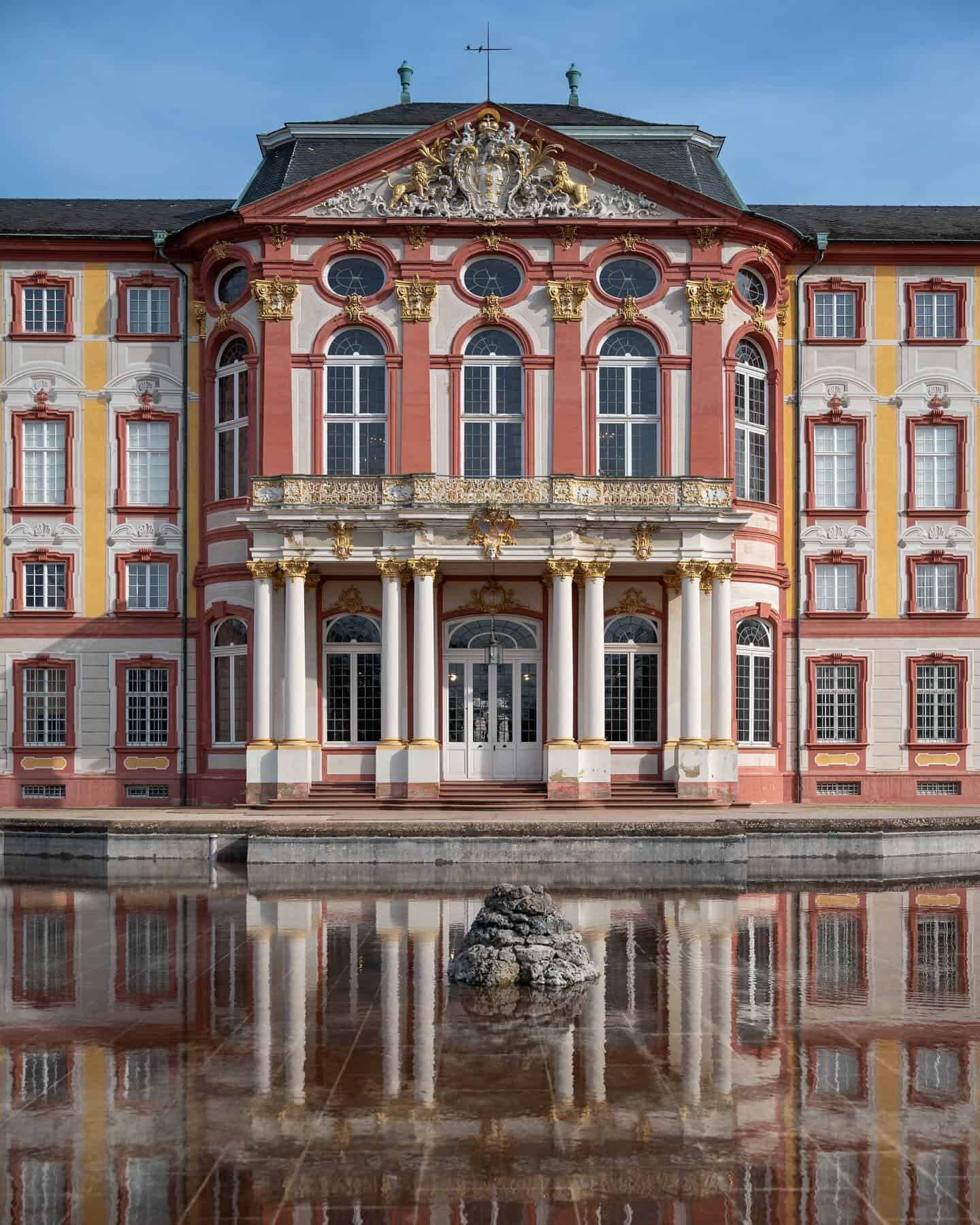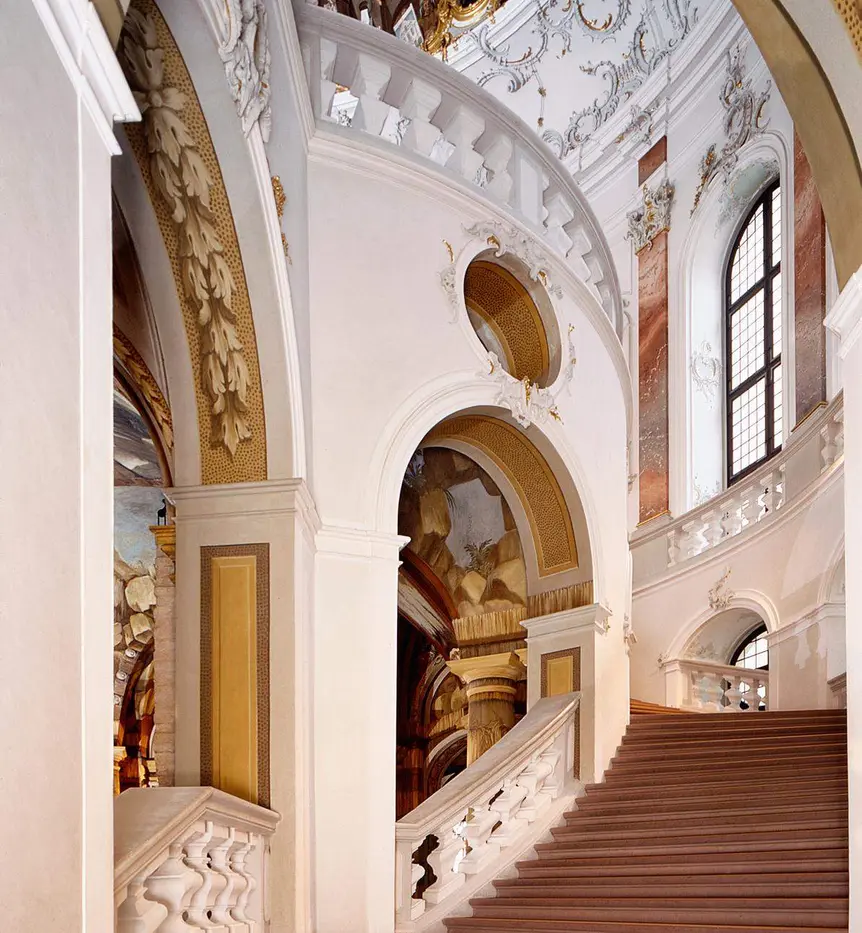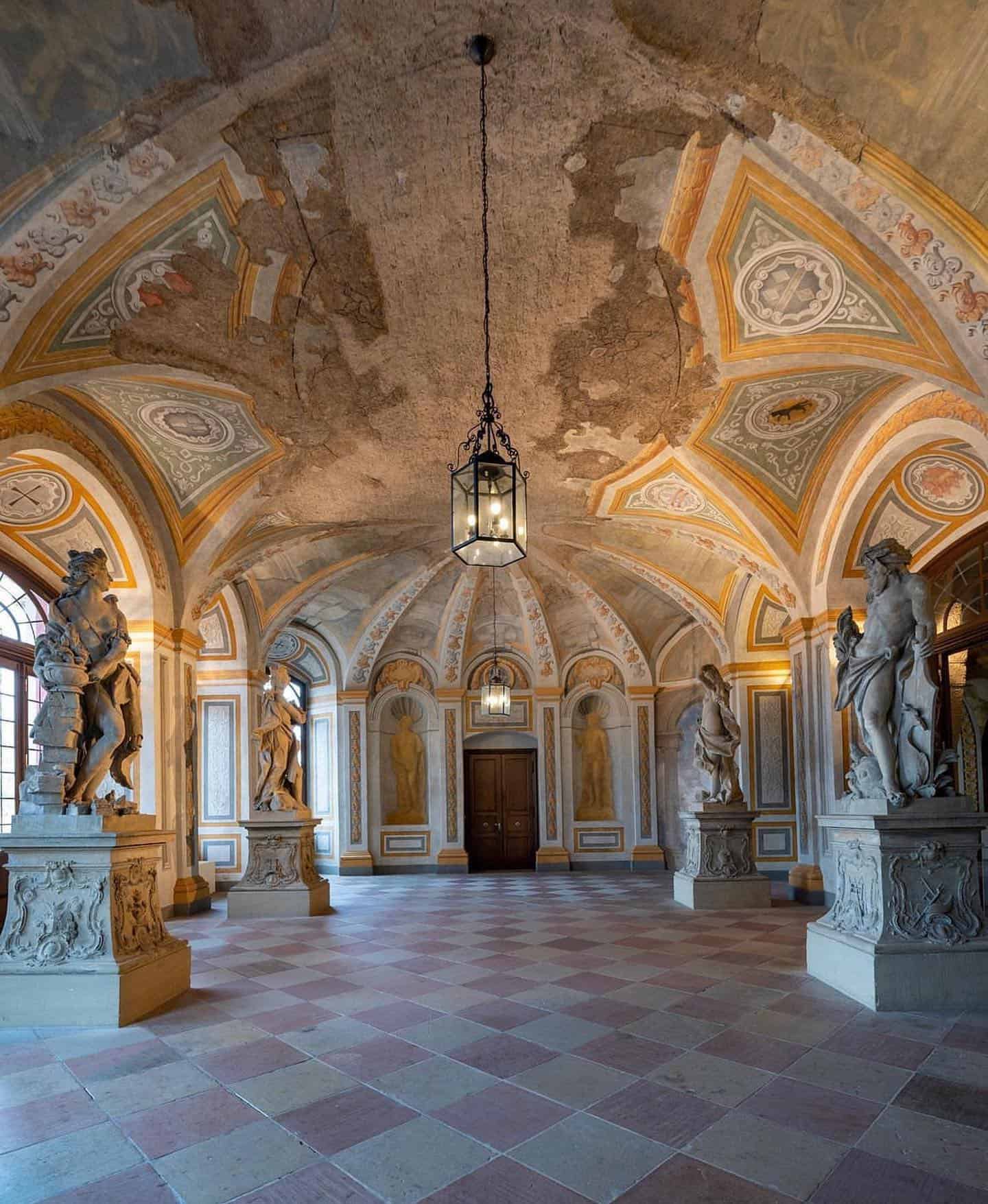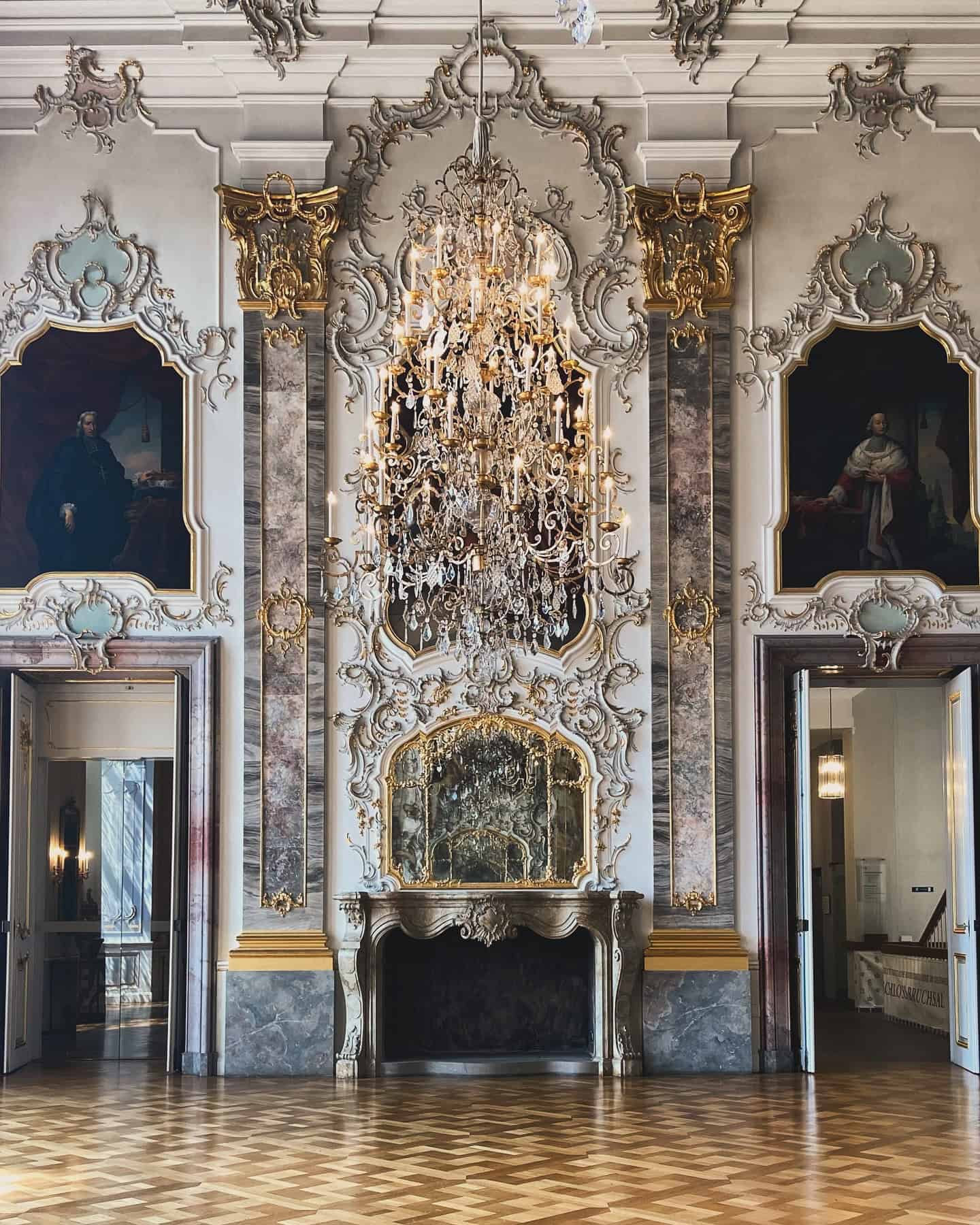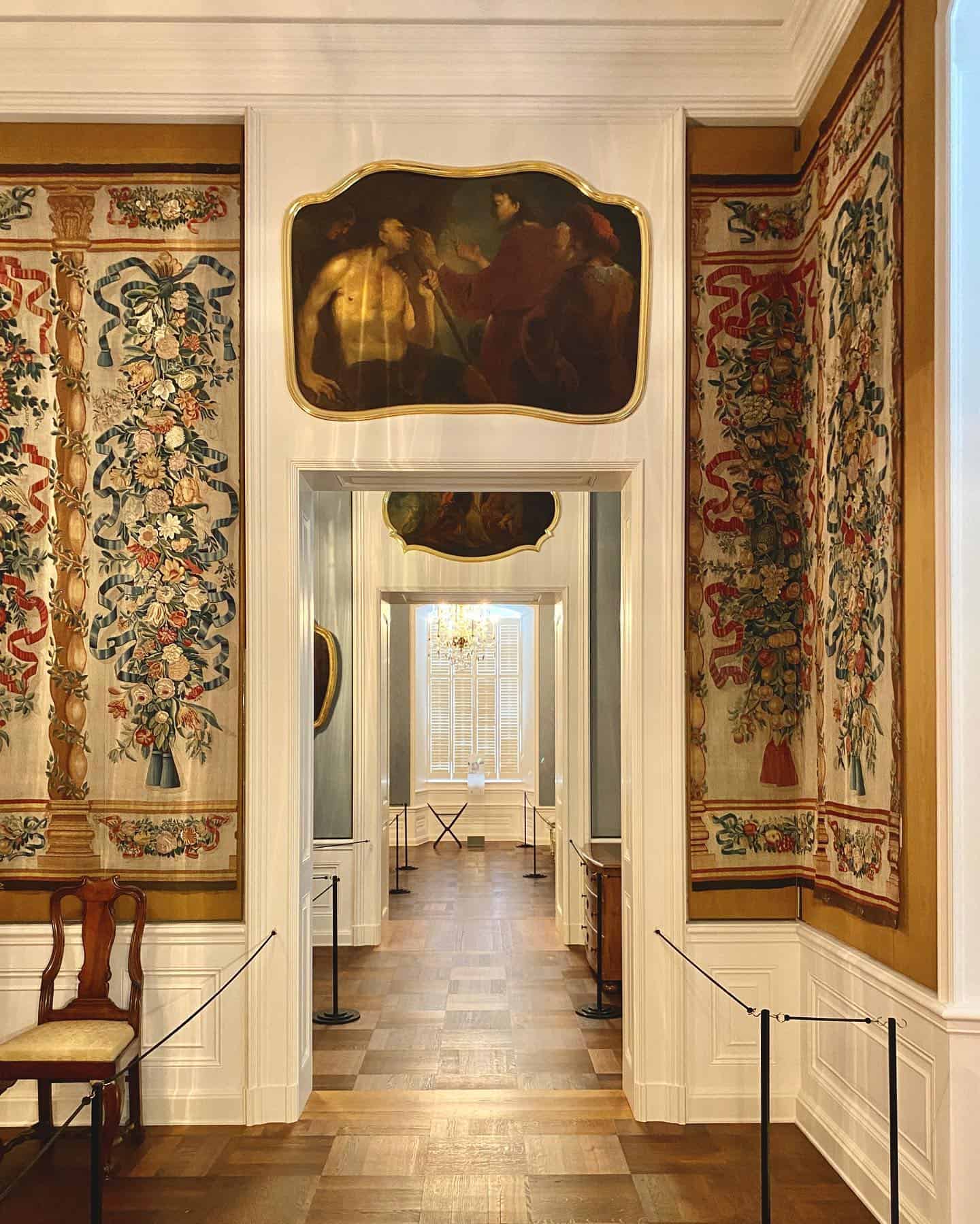Bruchsal Palace stands as a stunning symbol of Baroque architecture on the Upper Rhine, renowned for its magnificent staircase crafted by Balthasar Neumann.
Originally built in 1720 for the Prince-Bishops of Speyer, this sandstone marvel features an exquisite blend of artistically matched buildings and gardens.
Post-war restoration efforts have preserved its historical charm, making it a must-visit destination.
1. A Unique Ecclesiastical Residence
As the only ecclesiastical residence on the Upper Rhine, Bruchsal Palace boasts a unique heritage. Its grand facade captures the elegance and history of a bygone era.
Visitors are drawn to the ornate designs that reflect the church’s influence.
The palace’s heritage gives it a distinct place in German history, making it a remarkable destination for history enthusiasts.
2. The Crown Jewel Staircase
Crafted in 1728, the staircase by Balthasar Neumann is celebrated as the “crown jewel of all Baroque staircases.”
Its intricate details mesmerize visitors with their artistic elegance.
Each step resonates with the poetic charm synonymous with Neumann’s architectural genius, making it an essential highlight for architecture lovers visiting the palace.
3. A Visionary Prince-Bishop
Damian Hugo von Schönborn, an art-loving Prince-Bishop, played a pivotal role in planning Bruchsal Palace.
His dedication to art and culture is evident throughout the palace’s design.
Schönborn’s vision transformed the palace into a place of cultural and architectural significance, reflecting his passion for the arts.
4. Majestic Sandstone Construction
The palace’s construction in sandstone creates an appearance of timeless elegance. Its intricate carvings and designs stand as a testament to the craftsmanship of the era.
The choice of sandstone not only enhances its beauty but also secures its place as one of the architectural marvels of its time.
5. Colorful Cour d’honneur
Upon entering the grand courtyard known as the cour d’honneur, visitors are greeted by a vibrant display of colors and gold-plated decorations.
The grand courtyard’s lively appearance provides a joyful entrance, welcoming guests to explore more of the palace’s splendor.
6. Golden Gargoyles and Rich Decor
The architectural charm of Bruchsal Palace is accentuated by golden gargoyles shaped like dragons.
This unique decor, combined with gold-plated stucco, highlights the luxurious taste of its creators.
These stunning details add a touch of whimsy and grandeur to the palace’s appearance.
7. Franz Christoph von Hutten’s Influence
Following Schönborn, Franz Christoph von Hutten adorned the palace halls with his artistic influence.
The Fürstensaal, Marmorsaal, and Paradezimmer were embellished with opulence.
His contributions left a lasting impression on the palace’s aesthetic, showcasing his flair for grandeur.
8. Resilience Through Reconstruction
Despite being almost completely destroyed in World War II, Bruchsal Palace’s staircase survived, and its restoration became a remarkable feat.
The reconstruction effort preserved its historical essence, allowing future generations to witness its former glory. This resilience adds to its significant story.
9. Beyond Baroque: A Museum Experience
Bruchsal Palace not only showcases Baroque architecture but also houses the German Museum of Mechanical Musical Instruments.
Visitors can explore a fascinating collection that spans history and technology. This museum enriches the cultural offering of the palace, appealing to diverse interests.
10. The Enchanting Garden
Complementing the architectural beauty, the palace’s garden offers a serene escape with its meticulously arranged designs.
Visitors can stroll through the lush landscapes, enjoying the harmonious blend of nature and art.
This garden is a peaceful retreat for those seeking tranquility amidst historical splendor.

